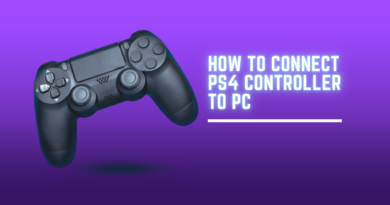Open Your Inner Talent developers: Create a Game (Even If You Can’t Code)
The field of game creation is a thrilling frontier where technology and creativity collide. Making your own game is an exciting and challenging process, regardless of your goals—making an action-packed platformer, an engrossing puzzle game, or an immersive role-playing game. We’ll look at how to create a game in this in-depth lesson, even if you’ve never coded before.
Understanding the Basics of Game Development
Prior to getting too technical, let’s make sure everyone knows exactly what game development comprises. The process of planning, making, and publishing a game is called game development. This procedure includes a number of essential components:
-
Concept Development: Here’s where your concept starts. Which kind of game are you hoping to make? Who is the intended audience for you? Establishing a strong foundation requires providing answers to these issues.
-
Game Design: At this point, the story, characters, gameplay mechanics, and general aesthetic are all defined. A well-planned design document can act as a guide for you as the project is being developed.
-
Prototyping: Here, you essentially put your ideas to life. Testing your ideas through prototyping enables you to make the required changes before moving on with full development.
-
Production: The majority of the work is done during this phase. It entails integrating audio, producing art assets, and writing code (or employing no-code solutions).
-
Testing: Ensuring quality is essential. Testing ensures a refined end product by assisting in the identification of bugs and gameplay concerns.
-
Launch and Marketing: It’s time to release your game to the public after it’s finished. Useful marketing techniques can assist in getting your game in front of the target audience.
Step 1: Define Your Game Concept
The first step in how to make a game is defining your concept. Ask yourself:
- What genre am I interested in? Is it action, adventure, puzzle, or role-playing?
- What is the core gameplay loop? What will players do repeatedly?
- What story or message do I want to convey? Consider the themes you want to explore.
By answering these questions, you can clarify your vision and create a game that resonates with players.
Step 2: Choose the Right Tools
Your project’s success or failure depends on the development tools you use. Thankfully, a wide range of game creation platforms accommodate different levels of expertise. Here are a few well-liked choices:
-
Unity: A flexible engine that facilitates the creation of 2D and 3D games. Because of its extensive asset store and active community, it’s a fantastic option for both novice and seasoned creators.
-
Unreal Engine: Unreal is the best choice for developers that want to create visually striking content because of its amazing graphics capabilities. It offers a visual scripting tool called Blueprint that enables coding without the need to write conventional code.
-
GameSalad: With GameSalad’s drag-and-drop interface, even inexperienced users may easily develop games without any prior coding knowledge.
-
Construct: This platform is mostly used for 2D game development, and it has a visual editor that makes creating gameplay mechanisms easier.
Step 3: Start Prototyping
Selecting your tools and getting started with prototype are the next steps. Validating your concepts and making sure your game mechanics function as intended require prototyping. Try to make a basic version of your game that encapsulates the essential gameplay elements. Here are some pointers:
-
Keep it Simple: Don’t try to be flawless. Your prototype is merely the beginning. Pay attention to the game loop and fundamental mechanics.
-
Iterate Quickly: Make versions of your game using fast prototyping techniques. This enables you to try new things and modify your concepts in response to criticism.
-
Seek Feedback: Talk about your prototype with other developers or friends. Their opinions can offer insightful information about possible advancements.
Step 4: Game Design and Development
It’s time to use design and development to bring your game to life after you have a working prototype. This stage consists of multiple essential elements:
1. Game Mechanics
The policies and procedures that direct gameplay are known as game mechanics. Take into account how gamers will engage with your game. Will they shoot, leap, work puzzles, or just explore? Having well defined mechanics is essential to producing an enjoyable gaming experience.
2. Art and Graphics
A big part of creating a game is the image. Art assets may need to be created or sourced, depending on the platform you have selected. You have three options: use asset stores, employ artists, or make basic graphics yourself. Maintaining a consistent art style will improve the overall appearance and feel of your game.
3. Sound Design
Music and sound effects give your game depth. Think about the ways that audio can improve the player experience. You have three options for music: employ a sound designer, find royalty-free tunes, or write your own.
Step 5: Testing Your Game
A crucial step in the creation of games is testing. It assists you in locating bugs, problems with the gameplay, and areas that require work. Here’s how to carry out tests that work:
-
Playtest Early and Often: To identify problems early, test your game at different phases of production. Playtesting early on can help you save a lot of headaches down the road.
-
Gather Feedback: Urge testers to give candid criticism. Inquire specifically about their experience and the things that confused or frustrated them.
-
Iterate Based on Feedback: Utilize the knowledge gathered from testing to improve your game. Don’t be scared to adjust your plan in light of player feedback.
Step 6: Launching Your Game
It’s time to release your game after many hours of labor! But take into account these crucial actions before clicking “publish”:
-
Prepare for Launch: Make sure your game is well-polished and devoid of serious errors. Establish a strategy for handling any problems that crop up after the launch.
-
Create a Marketing Strategy: Distribute your game via social networking, online forums, and online stores like itch.io and Steam. Creating a community around your game can encourage players to play and give it a try.
-
Engage with Your Audience: Engage in player interaction and feedback gathering after launch. Attend to their grievances and keep refining your game in light of user feedback.
Conclusion
Although it may seem difficult, making a game can be a really fulfilling experience if you have the correct attitude, resources, and methods. You may make your game ideas a reality by grasping the essential steps in the development process and making the most of the tools at your disposal. Now go ahead and let your imagination run wild as you go on an exciting adventure into the realm of game production!
Frequently Asked Questions (FAQs)
1. Do I need to know how to code to make a game?
No, many game development platforms allow you to create games without coding. Tools like GameSalad and Construct offer drag-and-drop interfaces that simplify the process.
2. How long does it take to make a game?
The time it takes to create a game varies widely based on complexity, team size, and available resources. Simple games can take weeks, while larger projects may require months or even years.
3. Can I make money from my game?
Yes, many developers monetize their games through sales, in-game purchases, or ads. However, success often depends on effective marketing and community engagement.
4. What’s the best game development platform for beginners?
Platforms like GameSalad and Construct are excellent choices for beginners due to their user-friendly interfaces and lack of required coding skills.
5. What types of games can I create?
You can create various types of games, including 2D platformers, puzzle games, RPGs, and more. The possibilities are endless, limited only by your imagination.




